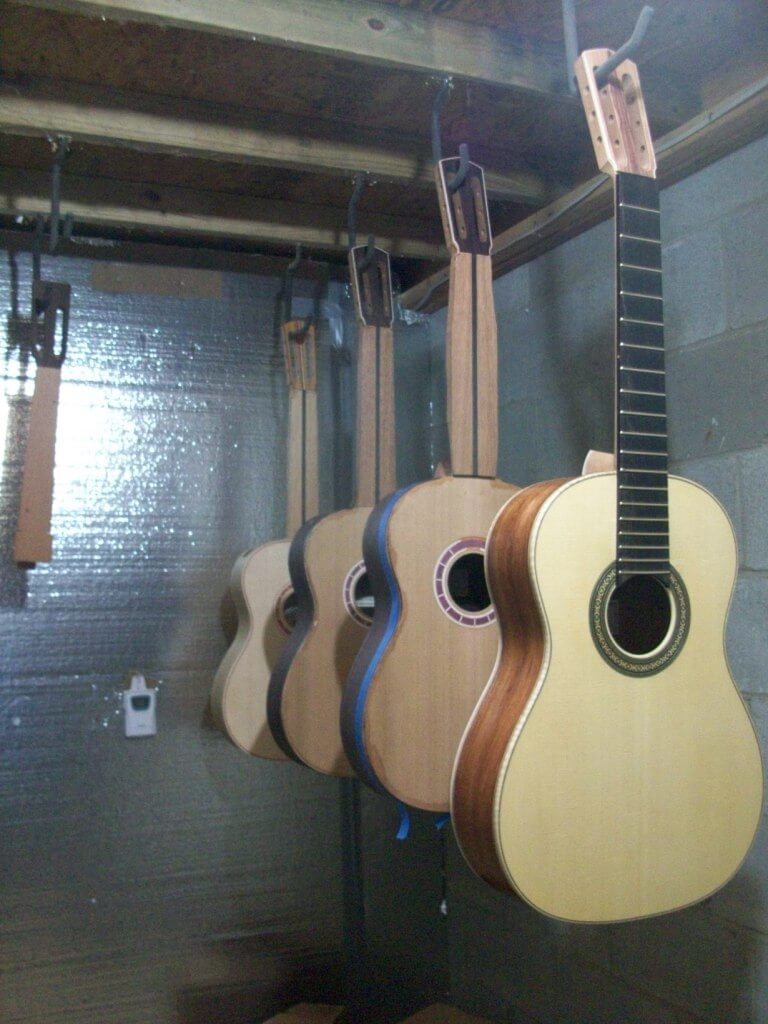The Next Four Guitars

John Gregerson's Guitar
Mr. Gregerson of Minnessota purchased guitar no. 4 and after playing it, entrusted me with a project to build a guitar using some Honduran Rosewood and a master grade (aka very nice) piece of Engelmann Spruce that he had in safe keeping for a while. In addition to sending me the wood, his only request was that I make a guitar that I would also like to play and own, so I decided to work on this guitar alongside my Jamaican wood guitar, choosing a similar top for my own, using the same choices in bracing pattern and voicing etc. The guitar will be complete by the end of this week and it should be listed on the guitar page with a picture gallery by the beginning of June at the latest.
Stephen Mattingly's Guitar
When I visited the University of Louisville with guitar no. 4 in June and met their guitar professor Stephen Mattingly, I never expected to be getting an order. This guitar is actually my first order; however, I have completed two other orders since because he requested the guitar for the end of June (GFA). The guitar is my first example of an elevated fingerboard - a very subtle elevation of 1/4" at the 12th fret, the same, smaller body size and bracing as guitar no. 4, and the very first guitar to use a handmade rosette of my own design. The cedar top wood used for this guitar comes from the same batch of wood used for guitar no. 4, 5, & 6 and top cut off a log that is yielding some consistently stiff and light plates. If you are going to GFA, and would like to give this guitar a test drive, then track down Dr. Mattingly and get some his permission. He is an especially hospitable, energetic person (and a talented guitarist).
The GFA Guitar
Combining the wood from the same cedar tree that created guitars no. 4, 5, 6 and 7 - the GFA guitar will use the assymetrical lattice pattern that the owners of guitars 3, 5, and 6 have enjoyed. Projection is certainly no problem with this type of guitar. A thinner top, stiffer side construction, and a very taut system of assymetrical lattice bracing give this model very clear and strong trebles with the deep double bass-like basses that I have come to love so much. This guitar also uses my own handmade, natural wood rosette, binding and purfling. I have never attempted this design with a spruce top, but I will be before the end of 2013. This guitar will be available for sale and test driving at the Guitar Foundation of America convention the week of June 24th.
The Jamaican Guitar
You can barely see the guitar I making for myself in the picture, but it is just behind John Gregerson's guitar in being completed. I will be preparing it for finishing this last week of May while I alternate between coats of shellac on Mr. Gregerson's guitar. I have a little article already on this Website about the wood that I brought back from Jamaica. The Mosquito Wood that I am using for the back and sides is a wood that I passed by frequestly on a trial project that I did while in the Peace Corps in Jamaica. It has turned out to be a stunning piece of wood and should people request more, I wouldn't mind going back to Jamaica to see my friends and put some of the farmers and friends back to work for day of getting more of this wood (dead trees of course).
